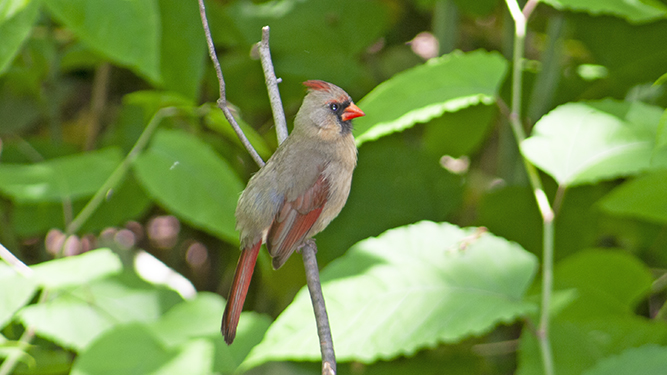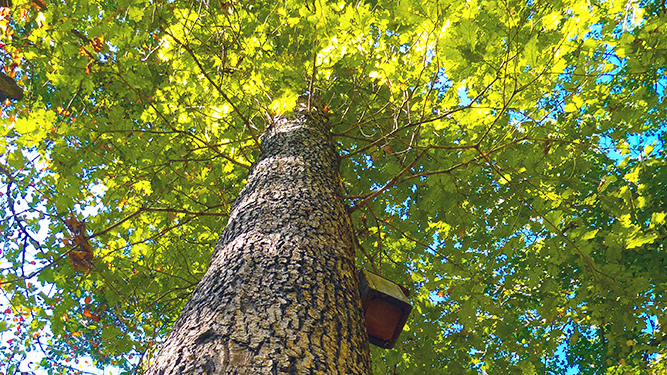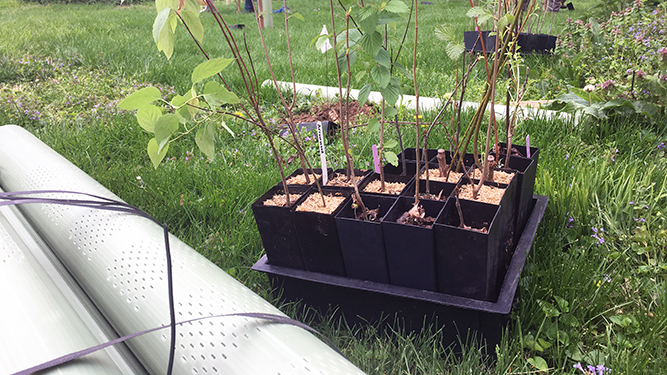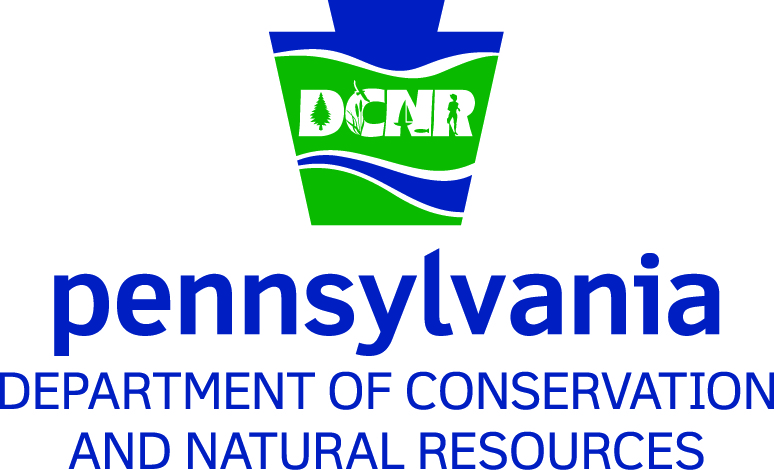With the recent celebrations of Earth Day and Arbor Day, many people have been seeing more information about ways to help the environment — perhaps even overloaded with all the information out there.
The impacts of climate change and the threat of invasive species have some people wondering if helping the environment is a losing battle, and some don’t know where to start.
We’re here to say that it is not a losing battle. While there are many ways to help the environment, one of the best things you can do is to plant a native tree!
It’s no coincidence that the first Earth Day was celebrated on Arbor Day (Arbor Day was later moved to the last Friday in April).
Back in 1970, it was recognized that helping the environment was tied to the importance of planting trees; but now we know so much more about the importance of planting native trees.
Benefits of Planting Native Trees
Planting native trees has many benefits:
- Native trees require less maintenance. Because native trees are already adapted to local soils, climate, and conditions, they require less watering and soil amendments. Once established, they will require little else and will persist through frost and drought.
- Native trees are vital to helping provide clean water. Native trees have deeper roots that hold soil better and reduce stormwater runoff by reducing soil erosion along river and stream banks and absorbing dirty water before it gets into the waterways.
- Native trees are so important in supporting biodiversity. They provide important food and shelter to a variety of insects, birds, and other wildlife. Without native trees and the insects that co-evolved with them, local birds cannot survive.
- Native trees help combat effects of climate change. Native trees help to reduce the amount of carbon in the atmosphere by sequestering carbon as they grow. Once mature, healthy trees continue to store carbon from the atmosphere in their fibers until they decompose.
- Native trees are important to our health. Besides helping to remove pollutants from the air and providing oxygen, the shade from trees helps to combat rising temperatures, and trees are found to help relieve stress by reducing noise, relaxing the mind, and lowering blood pressure.
What Are the Best Native Trees to Plant in Pennsylvania?
It’s well established that native trees are good for us and the environment, but some native trees provide more benefit than others.
Here are a few suggestions of native trees to plant that will produce the most environmental benefits in a landscaped setting.
Oak Trees
Oak trees are large, stately trees that are one of the most important sources of food and shelter for a variety of wildlife over a long period of time.
They also support the highest diversity of pollinators.
According to research by Dr. Doug Tallamy (including on his property in southeastern Pennsylvania), native oak trees support more than 500 species of caterpillars, which in turn provide an important food source for birds.
But its not just birds the oak trees support. They provide acorns and shelter that a variety of other wildlife depend on.
Oak trees also absorb high amounts of carbon dioxide (CO2) making them an excellent choice to help mitigate climate change.
We recommend planting these fast-growing trees:
- White oak trees (Quercus alba) are widespread across Pennsylvania and will do well across the state. The best place to plant them is in sunny and either dry or moist sites.
- Northern red oak trees (Quercus rubra) are often planted for shade and can do well in city conditions. The best place to plant them is in sunny, dry sites.
Tree shelters are essential when planting oaks, as deer will forage on them.
Hickory Trees
Hickory trees are also considered important for their ecological benefits. Their ecological value follows closely behind oak trees.
Hickory nuts provide food for a variety of wildlife and the loose bark of the shagbark hickory (Carya ovata) can provide a hidden roost for bats and shelter for insects over winter.
Hickory trees also help sequester large amounts of carbon, helping to offset impacts of climate change.
Hickories are susceptible to few forest pests or diseases, making them a low maintenance tree.
The best place to plant them is in a sunny location with well-drained, moist soils.
Tree shelters are essential when planting hickories, as deer will forage on them.
Additional Resources on Planting Natives
Planting native trees is best for the environment. While there are many more native trees that you can plant, we highlighted a few that have the most benefits.
The benefits of planting native species go beyond trees. There are other native plants, shrubs, and grasses that are also important to biodiversity if you can’t plant a tree.
The Department of Conservation and Natural Resources’ website provides additional information about landscaping with native trees and plants.
Note: When you purchase a tree from a nursery, ask the grower if they know the seed origin of the tree. Trees with a local seed origin or those from slightly south of your planting location are more likely to be genetically adapted to the current and future climate.
The department also recently published a blog about bringing biodiversity back to your lawn if planting a tree doesn’t seem reasonable for your space.
If you don’t have a place to plant anything, you can still help support native tree plantings across the state by donating to the Keystone Tree Fund.
Learn more about native trees and plants through activities taking place around the state celebrating the second annual Pennsylvania Native Species Day, on Thursday, May 18.
About DCNR:
Established on July 1, 1995, the Pennsylvania Department of Conservation and Natural Resources (DCNR) is charged with maintaining and protecting 121 state parks; managing 2.2 million acres of state forest land; providing information on the state’s ecological and geologic resources; and establishing community conservation partnerships with grants and technical assistance to benefit rivers, trails, greenways, local parks and recreation, regional heritage parks, open space, and natural areas. DCNR’s mission is to conserve and sustain Pennsylvania’s natural resources for present and future generations’ use and enjoyment. Learn more at DCNR.pa.gov.
Related Articles
A UV night hike at Black Moshannon State Park
Read MoreStart your 2025 on the right foot with a First Day Hike
Read MoreAllegheny River Cleanup receives 2024 Outstanding Wild and Scenic Rivers Stewardship national award
Read MoreAuthor: Guest Contributor
The Pennsylvania Wilds is home to more than 2 million acres of public land, 50 state game lands, 29 state parks, 8 state forests, 2 National Wild & Scenic Rivers, abundant wildlife, hundreds of miles of land and water trails, some of the darkest skies in the country, and the largest elk herd in the northeast.
The PA Wilds team is grateful to share the many stories of this region through the words and images of our talented guest contributors.







